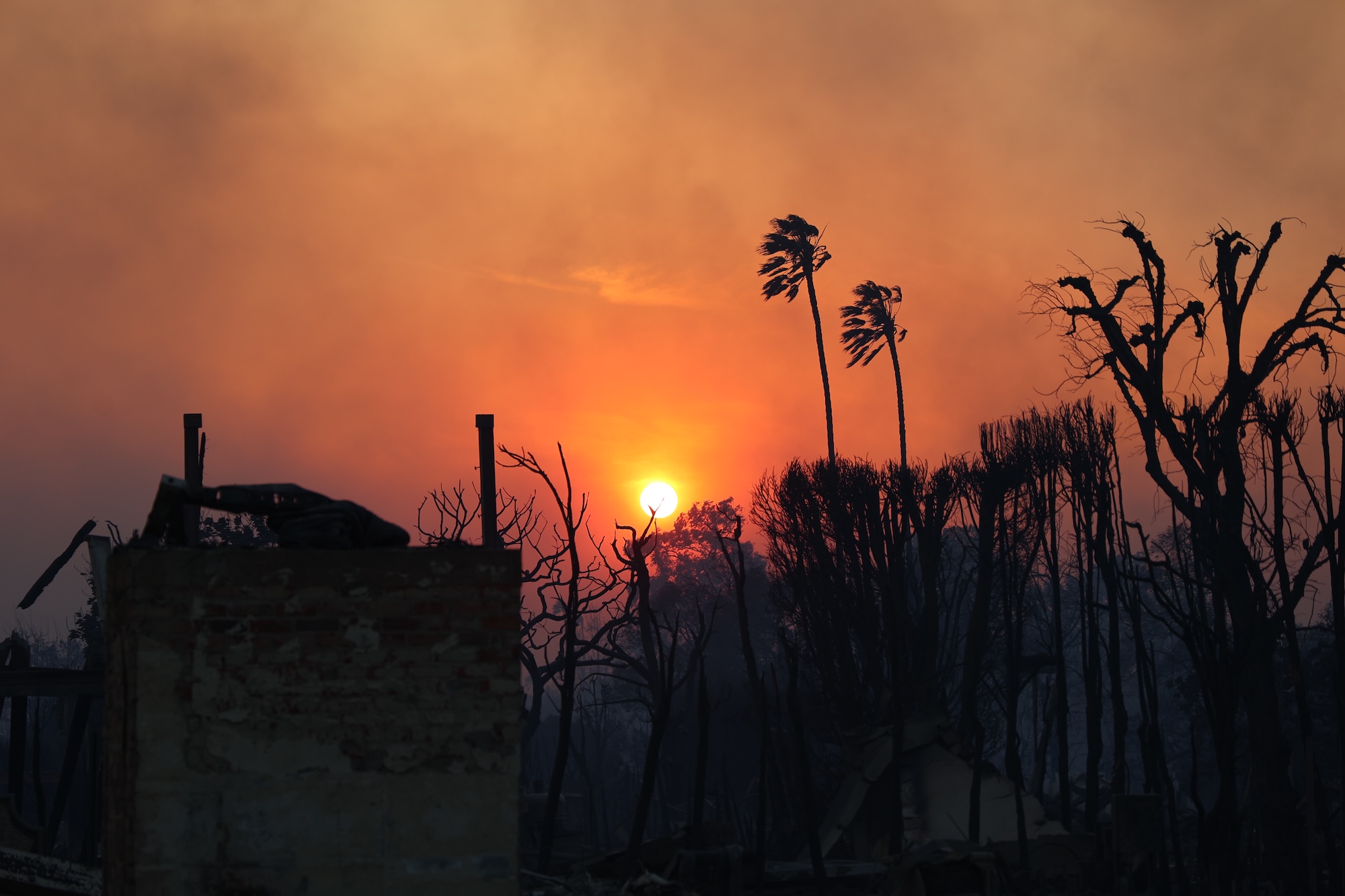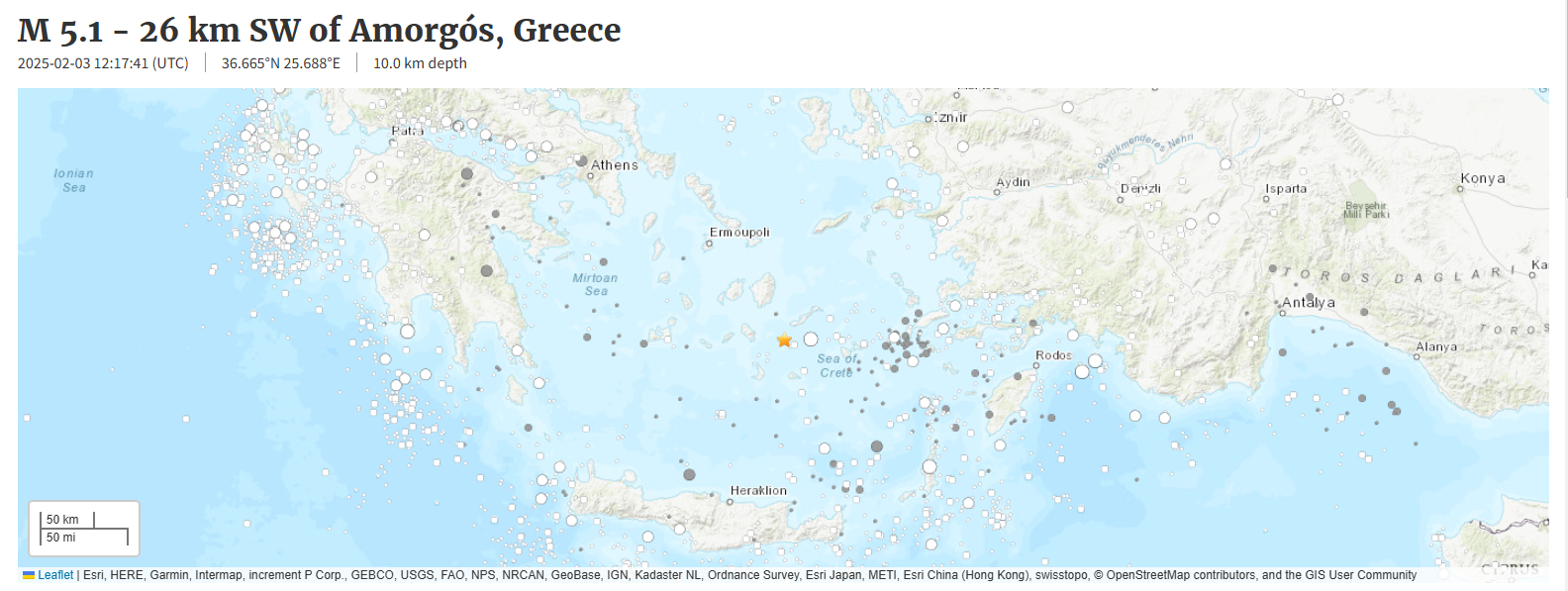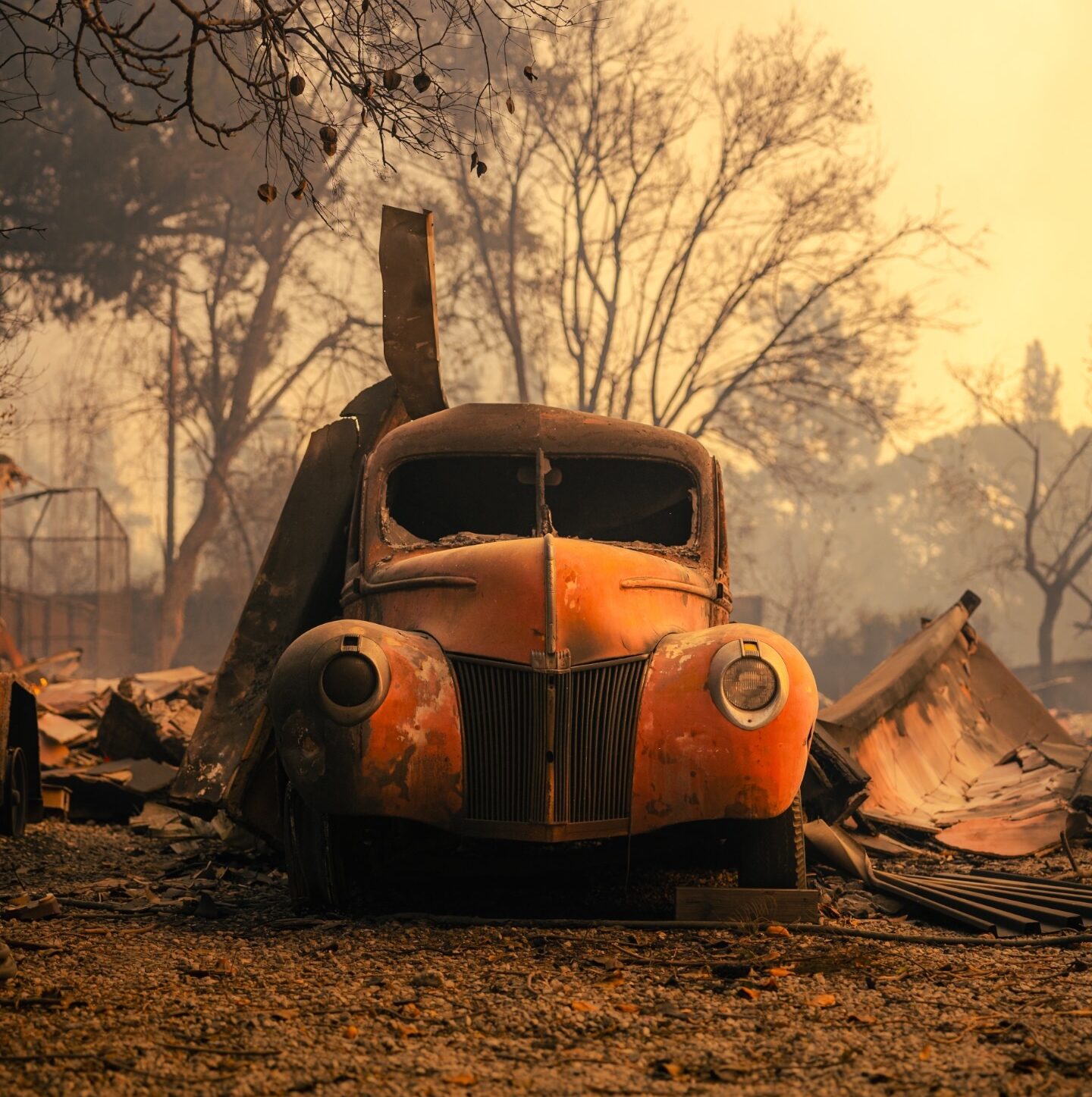What we’re watching: Weekly disaster update, February 3

We know all too well that disaster can strike anytime, anywhere in the world. Some disasters make headlines; others do not. Here at the Center for Disaster Philanthropy (CDP), we monitor the status of disasters worldwide and compile a list of the ones we’re tracking weekly, along with relevant disaster-related media coverage.
Here’s what we’re watching for the week of Feb. 3, 2025.
New or Emerging Disasters
Disease Outbreaks – Multiple Countries: A nurse in Kampala, Uganda, died Jan. 29 in the country’s first outbreak of Ebola in two years. Several other countries have reported a resurgence of cases, including the Democratic Republic of Congo (DRC), which has reported 11 suspected cases and eight deaths. Tanzania is experiencing an outbreak of Marburg Fever, a related illness, on the border with eastern DRC.
Tuberculosis Outbreak – Kansas, USA: Two counties in Kansas are dealing with a large tuberculosis (TB) outbreak that has alarmed local experts. While there is no threat to the public, 67 people are being treated for active TB, and another 79 have latent TB. This is the largest outbreak in the U.S. since case tracking began in the 1950s. The number of cases is now decreasing despite an overall increase since 2023.
Flooding – Queensland, Australia: One woman died, and thousands of people evacuated after 4.2 feet of rain fell between Feb. 1 and Feb. 3 (equivalent to six months of typical rainfall). Parts of a 1,000-mile highway that runs between the south and north of the state have been blocked, including the partial collapse of a bridge that could create a 430-mile detour. Up to 2,000 homes are expected to be flooded.
Rain is expected to continue this week, and at least six rivers are in major flood stages. While Australia has requested international assistance in the past for large-scale disasters, it usually doesn’t need international support due to its strong social safety net and infrastructure.
Wildfires – Argentina: In the heart of Argentina’s famous Patagonia mountains, at least 800 people have been evacuated, and one person died after wildfires swept the area near El Boson in Rio Negro province. About 7,400 acres have burned in the Patagonia region this year. The most recent fire broke out on Jan. 30, near the hiking area of Cajon del Azul in Amprale, about 13 miles north of the tourist hot spot of El Boson, but spread quickly. At least 70 homes have been damaged or destroyed.
Earthquakes – Greece: More than 200 earthquakes hit the island of Santorini, known as Greece’s “Instagram island,” between Jan. 31 and Feb. 3, striking fears that the swarm could be a sign of a significant earthquake to come.
As of 7 p.m. local time on Feb. 3, the biggest earthquake was a 5.1 earthquake, 16 miles southwest of Amorgós, which was recorded earlier that day at 2:17 p.m. Athens time. Greece’s civil protection ministry closed schools on Santorini and the nearby islands of Anafi, Amorgós and Ios.
On Feb. 3, ferry services and Aegean Airlines announced increased trips for the next two days to help evacuate the island. Home to just 20,000 permanent residents, Santorini welcomes more than 3.4 million visitors annually.

Previous/Ongoing Disasters
Wildfires – Los Angeles: Recovery is starting in Los Angeles County as both the Palisades and Eaton fires reached 100% containment, but not before 12,000 homes were destroyed, including 9,000 in Altadena. The Army Corps of Engineers said it may take up to 18 months to finish clean-up.
For the first time in almost a month (the fires started Jan. 7), the Pacific Coast Highway has reopened. Rain is expected to begin on Feb. 4, which could lead to debris or mud flows, especially in the burn scars. Meanwhile, MusiCares raised at least $7 million for fire relief during the Grammys on Feb. 2. Many present at the ceremony had also lost homes or been evacuated.
To learn more about California wildfires, head to CDP’s 2025 North American Wildfires profile.
Displacement – Democratic Republic of Congo (DRC): Goma, the largest city in DRC and a major humanitarian hub, fell to the armed group M23 in a major escalation of the ongoing conflict. Hundreds of thousands of civilians have been displaced by the fighting, many having experienced displacement multiple times. Looting, sexual assaults and violence caused mass injuries and deaths that overwhelmed hospitals and reverberated to cities across the country.
Complex Humanitarian Emergencies – Sudan
More than 650 days after the civil war between the Sudanese Army and the paramilitary Rapid Support Forces (RSF) began on April 15, 2023, Sudan faces the world’s biggest displacement crisis, largest child displacement crisis and worst hunger crisis. Sudan remains the top country on the International Rescue Committee’s Emergency Watchlist of “the 20 countries most at risk of new or worsened humanitarian emergencies.”
As the war spirals and atrocities mount, the U.S. has determined that both warring parties have committed war crimes, including crimes against humanity and ethnic cleansing in Darfur.
One of the most effective ways to help the people of Sudan is to support mutual aid groups, sometimes called emergency response rooms (ERRS). ERRs are a coordinated network of local volunteer groups led by civilians affected by the war. They provide everything from health care and food delivery to safe spaces for children separated from their parents and women experiencing violence.
Because of the scale of the catastrophe in Sudan and the lack of resources, mutual aid groups have remained small in scale and reach. They treat individuals and communities and set the foundation for peace-building locally. These groups provide a crucial lifeline for people suffering in this crisis. In August 2024, CDP provided a $50,000 grant to Adeela for Culture and Arts. This grant will support the ERRs through microgrants in coordination with the Localization Coordination Council.
On Sept. 23, 2024, CDP announced it is coordinating the Coalition for Mutual Aid in Sudan. The Coalition is a group of funders and other partners committed to strengthening local humanitarian response in Sudan by joining forces and resources to support the life-saving efforts of frontline local responders. The Coalition will work to channel funding to vetted networks of Sudanese responders. It will continue to draw attention to this grossly neglected and underfunded emergency among peer philanthropies and to galvanize additional funding to expand the reach and capacity of Sudanese responders through 2026.
To help, you can donate to CDP’s Sudan Humanitarian Crisis Fund.
Upcoming webinar
Destructive and unexpected: What funders should know about wildfire recovery

What We’re Reading
- Strength in Solidarity: How mutual aid is helping women survive Sudan’s war – The New Humanitarian: “Volunteers said the groups offer a lifeline for many women and girls, arguing that their needs have been especially neglected by the international aid response. They said the groups also offer a support system for members, helping them cope with the war. However, the volunteers said they face a dizzying number of challenges, from sexual violence perpetrated against them by RSF soldiers, to army-aligned authorities restricting their access to displacement camps where women are often most in need.”
- Lahaina Fire forward-looking report – Research Institutes: “It is vital to reiterate, as demonstrated throughout this report, that no single factor is, or set of factors are, directly responsible for the tragic outcome. The preconditions for these fires have been in the making for decades, stemming from the changing landscape of Maui Nui, more frequent extreme weather events, and the increased frequency of vegetation-fueled fires. It is important to note these same conditions exist across the State of Hawaii, in numerous other locations throughout the United States, and around the globe.” Many of the recommendations can be adapted for other locations and will require philanthropic support to implement.
- The battle for recovery supplies is on in a disaster strewn America – WoodCentral: Six states on the East Coast are rebuilding after this summer’s hurricanes, and rebuilding needs will soon spread to Los Angeles County after its devastating wildfires. Competition for labor and supplies could be challenged by tariffs placed on Canadian lumber and the crackdown on immigrants, refugees and asylum seekers, many of whom work in the construction industry.
A moment of hope… On Jan. 30, Taranaki Maunga (Mount Taranaki), a mountain in New Zealand, was granted legal personhood. Granting the mountain human rights means that the health and well-being of the ecology and wildlife on the mountain must be upheld. Māori community members and people appointed by New Zealand’s conservation minister will comprise a new entity called the “voice” of the mountain, which will make decisions to ensure it can flourish. This is the third natural entity in New Zealand to be granted personhood status.
